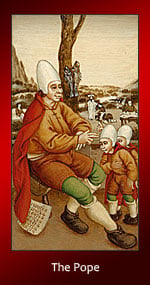The Numerology of 2019 and What it Means for You
Get your Numerology predictions by Personal Year number

2019 promises amazing opportunities for greater happiness, fulfillment, and well-being. Here’s why: 2019 adds up to a 12 Universal Year.
2+0+1+9 = 12, which is a unique and highly creative number!
During any 12 cycle you are acquiring knowledge and gaining the strength to help you manifest what you’re learning into fortunate results. 12 symbolizes education on all levels, so you may need to set aside distractions in order to achieve the wisdom needed to elevate your life. Meditation is more important in 2019. Tune into your intuition for instant solutions. Observe closely what is happening at all times to remain calm and serene. Go with the flow. Don’t resist, just accept.
12 can be reduced to the single-digit root number 3, because 1+2 = 3.
The number 3 symbolizes happiness, creativity, and communication, inviting you to express yourself through every medium you can imagine. You’ll be more active socially, as well as feeling more optimistic and free to explore in 2019. This can be one of the happiest years of your life! Friends will be important to you this year — they’ll support you, and you’ll help them in return.
Number 12/3 also activates the powerful 1-2-3 code, which means it time to ready, set, go! Needless to say, the MOMENTUM and MOVEMENT in 2019 is going to be tremendous!
But that’s just part of the story…
Your Personal Year Number
You are also impacted by your own Personal Year number. Some numerologists start everyone’s Personal Year on January 1. To calculate your number using this method:
1. Add all digits of your month and day of birth + 2019:
Month ___ + Day ___ + 2+0+1+9 = ______
2. Now add each single digit of your total to arrive at the single-digit Personal Year number:
______________ = ____________+ _____________ = __________________
(Total) = (1st single digit) + (2nd single digit) = (Personal Year number)
Example: Linda, born on May 23:
05-23-2019
5 + 2+3 + 2+0+1+9 = 22
22 = 2+2 = 4
In this case, Linda will be in a 4 Personal Year.
However, after reading thousands of clients, I have found that the shift we feel on New Year’s Day is related to the Universal Year number changing, not our individual Personal Year. Most people, unless they are born in January, have TWO Personal Year numbers during any given calendar year:
1. One carried over from the previous calendar year UNTIL your birth month.
2. One FROM your birth month onward.
Using this method in the example above, Linda would be a 3 Personal Yearfrom May 2018-April 2019 and a 4 Personal Year from May 2019–April 2020.
Now that you know your Personal Year Number(s) for 2019, lets head to the fun part: what it all means for you!
1 Personal Year
Keywords: new beginnings, action, change, new goals
Focus on: a fresh start, opportunity, rebirth, letting go of old ways, things, people, and investments that are not supporting you, learning a new modality, being bold and courageous — you are at a crossroads
Guard against: stubborn resistance to change, not being focused, being consciously present and avoiding planning your future
• You will experience a new beginning in some or all areas of your life
• Take the initiative with your ideas and ambitions
• This is an intense period of awakening and change
• Explore bold new directions
• Foster new opportunities
• Embrace what makes you unique
• Create and invent
2 Personal Year
Keywords: cooperation, new partnerships (personal and business), balance, patience, peace, germination of seeds planted in 1 Personal Year
Focus on: relationships, diplomacy, slowing down, meticulous attention to details, correct timing, trusting that your goals are being taken care of, listening, your intuition
Guard against: impatience, division, insecurity that prevents you from making decisions
• Your 2 cycle is bringing you into equilibrium, helping you balance light and dark, so you learn to embrace all of life’s experience without judgment
• Listen closely to your inner voice for answers and direction
• You are highly sensitive to energy from people and places
• Trust in the correct timing and be patient
• Foster relationships that bring balance to your life
• Communicate with compassion and sensitivity
• Take time for serenity
• Embrace your inner psychic!
3 Personal Year
Keywords: creative self-expression, social connections, sharing feelings, pleasure, beauty, communication
Focus on: circle of friends, expressing your true inner voice, sharing your gifts, relaxation and having fun, enjoyment of the arts, activities and people that make you feel positive, travel, action, optimism
Guard against: emotional drama, distractions, moodiness, meddling
• Tune into your creativity — it is being channeled through various sources and expresses itself through you
• Share your feelings openly and with vulnerability
• Take great joy in nurturing what fulfills you on soul level
• Your imagination is limitless!
• Setting positive intentions consistently attracts many opportunities
• Opportunities are seized with bold action
• Share your soul through writing, speaking, art, dance, or music
• Connect socially with others, especially your “soul family”
• What moves you to tears? Follow that thread.
4 Personal Year
Keywords: organization, planning, work, taking care of details, concentration
Focus on: work, logical deduction, manifesting goals step by step, security, home, perseverance, commitment, patience, planning
Guard against: working too hard, not relaxing, escaping responsibilities
• Dedicate this cycle to making your gifts real and tangible
• You feel secure when you set goals that align with your true values
• Organize your ideas and strategies into a coherent plan
• Work diligently at implementing your ideas to reap rich rewards
• Pay meticulous attention to details
• Your brilliance is grounded in a practical way
• Focus on family and home
5 Personal Year
Keywords: flexibility, pivot point, decisions, opportunity, surprises, adventure
Focus on: change, movement, taking risks, choices, expecting the unexpected, quick decisions, travel, being open, taking a chance, freedom
Guard against: scattered energy, multi-tasking, not following through, restlessness, impatience
• Embrace change as a constant in your life
• Freedom is key for you this cycle, so be as flexible as possible
• Constant movement propels you forward
• The middle of your nine-year cycle symbolizes a shift and a breakthrough
• You are transforming your life by taking risks
• Exploration and claiming your independence bring ultimate fulfillment
• Make big and small decisions quickly, so your energy does not stagnate
• Travel to unknown realms both physically and mentally
• Connect with others and share your new ideas
6 Personal Year
Keywords: taking on responsibilities, focus on family, home, love, and nurturing others, beauty, intimacy, home business, financial flow
Focus on: health, home, harmony, compassion, beauty in your environment, helping others, emotional equilibrium, personal growth, connecting to close friends, birthing new opportunities, nurturing your body, mind, and spirit.
Guard against: neglecting your needs, taking on too much responsibility, emotional imbalance, controlling others
• Embrace your responsibilities fully and with joy
• Be open to heal yourself, and you will be a healing influence on others
• Explore empathy and embrace being of loving service
• Your passion for life and compassion for others is expansive
• Focus on financial wellness and wealth
• Make your life and surroundings exquisitely beautiful
• Attend to your health and overall well-being
• Nurture yourself — you are giving a lot this cycle and must replenish
• Focus on home and family
7 Personal Year
Keywords: lightning spiritual insights, intuition, analysis, sudden discoveries, unexpected shifts, self-awareness, sabbatical, rest, awakening
Focus on: rest and rejuvenation, higher wisdom, learning and taking classes, introspection, slowing down, recognition, honor, spending time in nature, reading books, the unexpected, time alone
Guard against: over-analyzing, over-thinking, worrying, doubting
• Listen and act on your strong intuitive hits
• Think through your plans and implement your brilliant ideas
• Embrace sudden shifts as opportunities for growth
• Your wisdom expands exponentially through deep inner learning and understanding
• Be a bridge between spiritual and material realms
• Realize your intuitions and visions by taking time for retreats and relaxation
• Trust your hunches
• Seek wisdom and truth
• Rest and rejuvenate
8 Personal Year
Keywords: money manifestation, leadership, goals, strength, power, vision, energy expended equals rewards
Focus on: money matters, taking action, balancing the material and spiritual, building strength and confidence to overcome obstacles, prosperity, rewards, honors, ambition
Guard against: being afraid of success, doubting your own power to succeed, your perceived inability to follow through on goals
• This is your year of empowerment
• You are very motivated to manifest
• You exude confidence in everything you do, think, and envision about your future
• Lead and you will succeed
• A strong focus on abundance impacts the actualization of your vision
• You are motivated to fulfill your destiny
• Overcoming obstacles makes you stronger
• The energy you expend enriches you and brings great rewards
9 Personal Year
Keywords: completion, culmination, celebration, release, endings, unconditional love, compassionate leadership, wisdom
Focus on: finishing what you began in the last eight years, being of service, releasing relationships and beliefs that are keeping you stuck in old behaviors, practicing Feng Shui in all aspects of your life, purging and letting go as your nine-year cycle is coming to an end
Guard against: feeling discouraged and dissipated emotionally, resisting the urge to let go
• Embrace endings and celebrate your successes
• Leading from a place of love creates deep fulfillment
• Release ideas, beliefs, physical possessions, and people that you’ve outgrown or do not support or uplift you anymore
• Complete all projects by the end of this cycle to reap rewards
• By being a wise example to others, your love instills courage
• Embrace all that life has to offer — both difficulties and positive developments — for the greatest abundance
• Letting go of values acquired from others (and mistakenly attributed as your own) opens up miraculous doors
• You have come to the end of a cycle and are making room for a rebirth
Tarot.com is Part of Zappallas USA © 2019




















You must be logged in to post a comment.